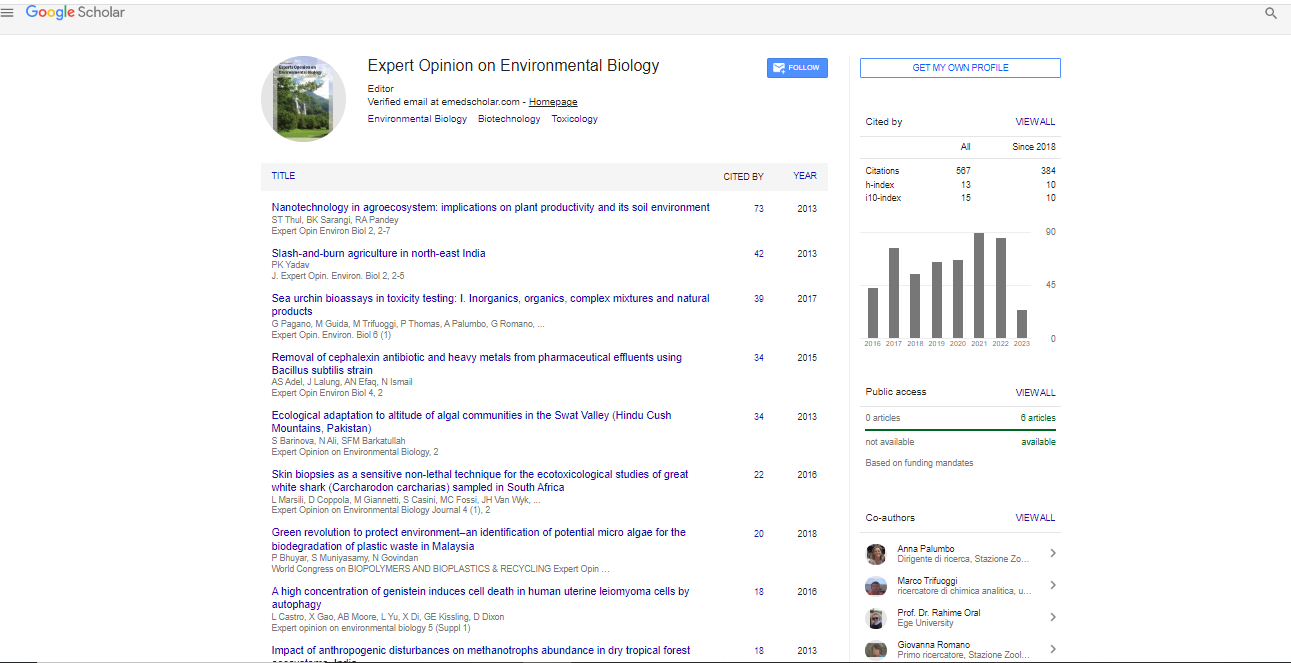Cool urban surface materials to cool the World, cities, and buildings
Hashem Akbari
Concordia University, Canada
: Expert Opin Environ Biol
Abstract
As the threat of climate change becomes more pronounced, a number of scientists have proposed supplementing the full range of mitigation efforts with geo-engineering (manipulation of the Earth’s environment) to quickly respond to this threat. Many proposed geo-engineering techniques are novel and unproven. One simple technology has been in practice for thousands of years: changing the solar reflectance (albedo) of the built surface. “Cool roofs†and “cool pavements†should be among the first geo-engineering techniques used to combat global warming. Increasing the solar reflectance of the urban surface reduce its solar heat gain, lowers its temperatures, and decreases its outflow of thermal infrared radiation into the atmosphere. This process of “negative radioactive forcing†can help counter the effects of global warming. It is estimated that resurfacing conventional dark roofs with a cool white material that has a long-term solar reflectance of 0.60 or more increases its solar reflectance by at least 0.40. Retrofitting 100 m2 of roof has an effect on radioactive forcing equivalent to a one-time offset of 10 tonnes of CO2. Similarly, the solar reflectance of pavement can be raised on average by about 0.15, the equivalent of a 4 t reduction in CO2 per 100 m2. In addition, cool roofs reduce cooling-energy use in air conditioned buildings and increase comfort in unconditioned buildings; and cool roofs and cool pavements mitigate summer urban heat islands, improving outdoor air quality and comfort. Installing cool roofs and cool pavements in cities worldwide is a compelling win-win-win activity that can be undertaken immediately, outside of international negotiations to cap CO2 emissions. The status of cool roof and cool pavements technologies, policies, and programs in the U.S., Europe, and Asia has been reviewed. An international campaign to use solar reflective materials when roofs and pavements are built or resurfaced in temperate and tropical regions is proposed. This paper will discuss the technologies and policies related to development and utilization of cool surface materials and their impact on energy use, urban climate change, and global climate change adaptation.
Biography
Hashem Akbari is a Professor at Concordia University (Montreal, Canada). Prior to joining the Concordia University he was the Leader of the Heat Island Group, Senior Scientist, and Principal Investigator in the Environmental Energy Technologies Division at LBNL. He has obtained his PhD in engineering from the University of California, Berkeley. As the leader of the Heat Island Group, he has been instrumental in the organization and initiation of the group at LBNL, funded by the US Department of Energy, Environmental Protection Agency, California Energy Commission, and several other sources. He is the author of more than 200 articles and coauthor of four books, and chief editor and editor of several scientific journals. He is the founding organizer of CRRC and ex-officio member of its Board of Directors; and an active member of ASHRAE, ASTM, and ASME. He is currently coordinating the “100 Cool Cities” initiative to cool urban heat islands and counter global warming.
Email: HAkbari@ENCS.Concordia.ca
 Spanish
Spanish  Chinese
Chinese  Russian
Russian  German
German  French
French  Japanese
Japanese  Portuguese
Portuguese  Hindi
Hindi 
